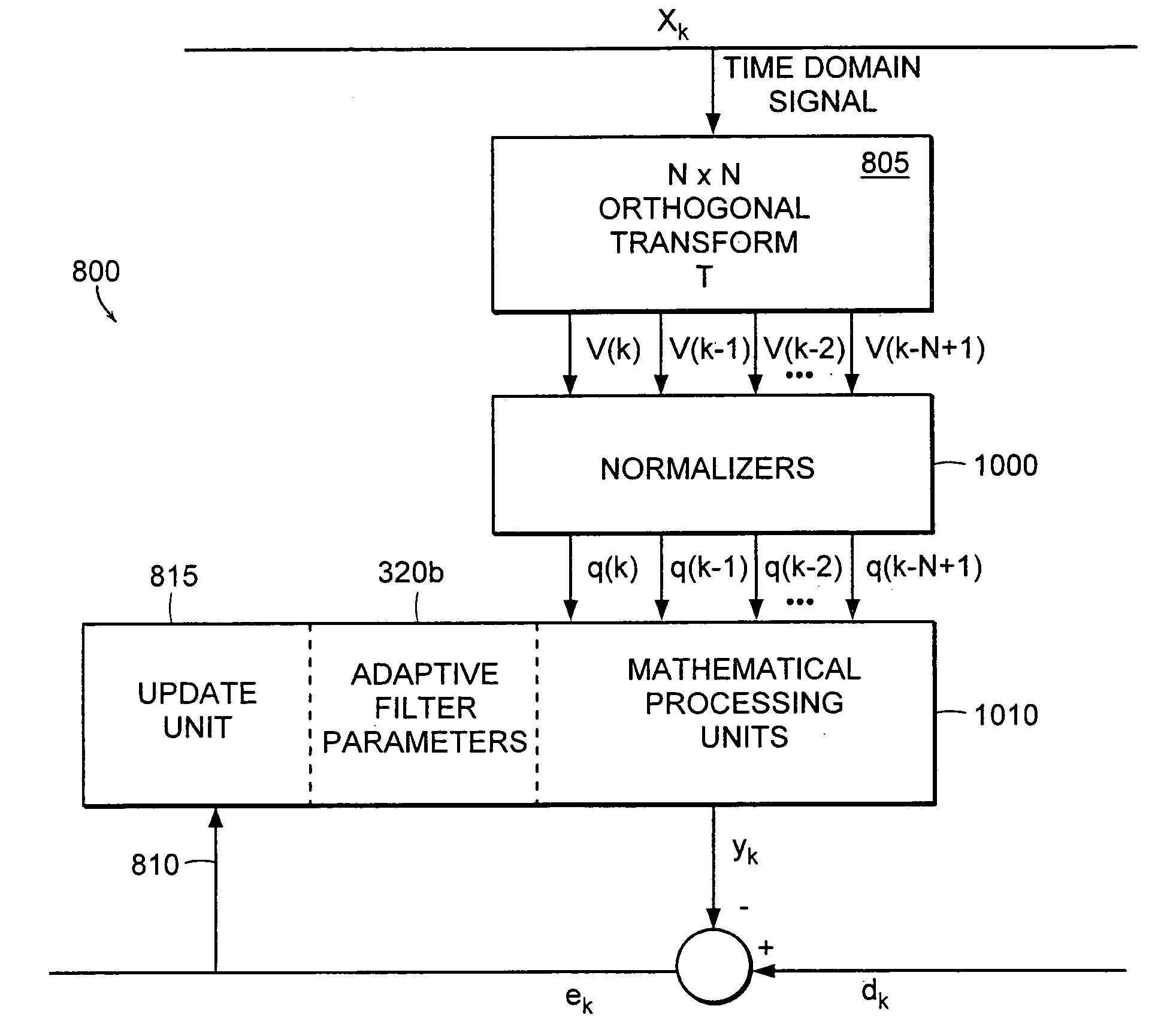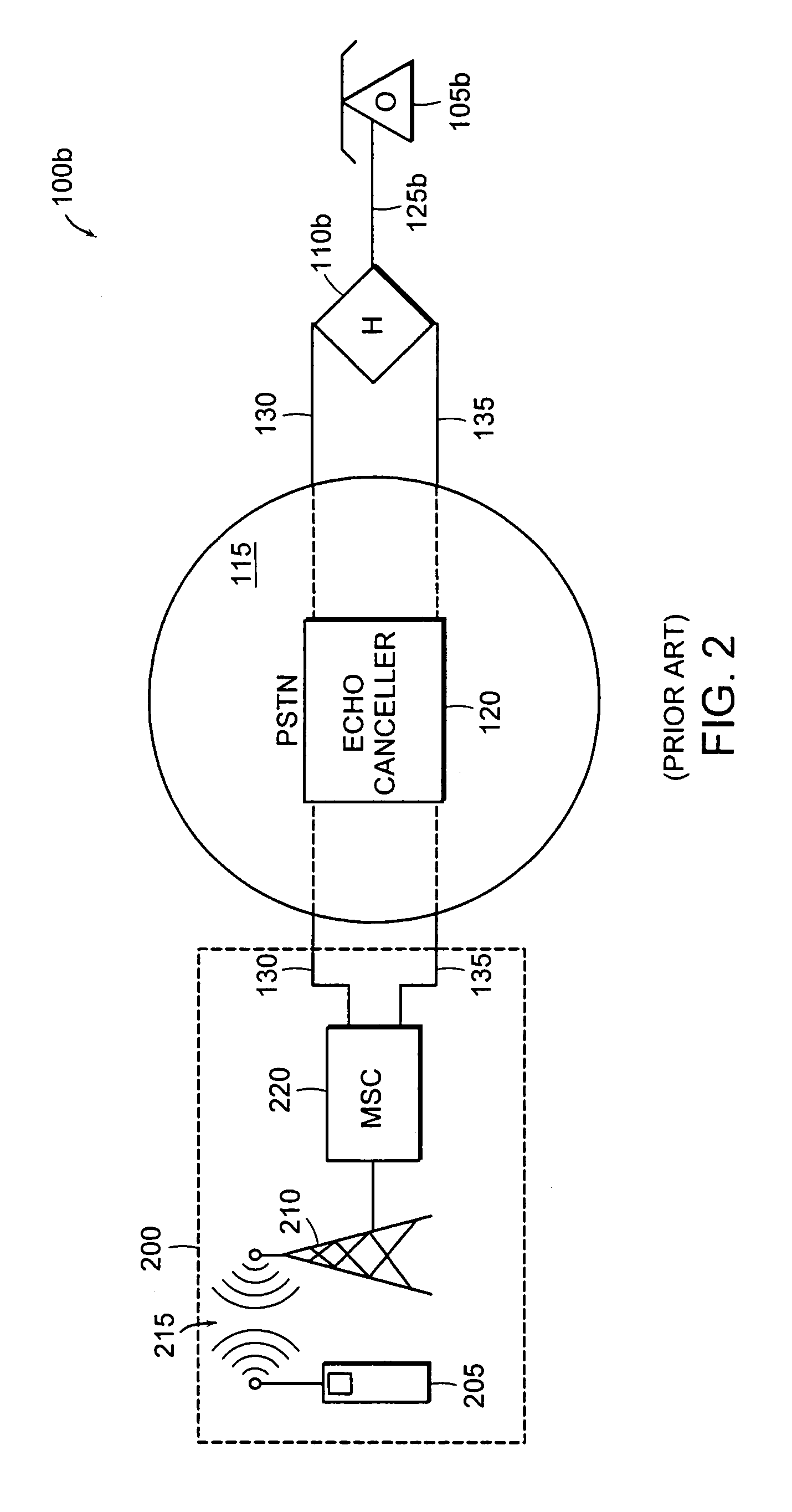Reduced complexity transform-domain adaptive filter using selective partial updates
a partial update and transform-domain technology, applied in the field of reduced complexity, can solve the problems of long adaptive filters, large computational complexity of adaptive filters, slow convergence characteristics, etc., and achieve the effect of reducing the number of transform-domain filter parameters adapted at each iteration and improving performan
- Summary
- Abstract
- Description
- Claims
- Application Information
AI Technical Summary
Benefits of technology
Problems solved by technology
Method used
Image
Examples
Embodiment Construction
[0056]A description of preferred embodiments of the invention follows.
[0057]FIG. 8A is a schematic diagram of the inventive transform-domain adaptive filter 800. The adaptive filter 800 is a transform away from the time-domain adaptive filter described above in reference to FIG. 7. Although transform domain filters require more memory and are more complex, they have faster convergence than time-domain adaptive filters, even though time-domain adaptive filters are simpler in implementation. The reason for the faster convergence is that the signals being processed are separated into frequency bins, and the signals in each of the frequency bins are not correlated as in the case of the time-domain adaptive filter, as discussed above. A unique problem with the transform-domain adaptive filter not found in the case of time domain adaptive filter is referred to as “lock-up,” which was learned during the design and implementation of this transform-domain adaptive filter 800.
[0058]In telecon...
PUM
 Login to View More
Login to View More Abstract
Description
Claims
Application Information
 Login to View More
Login to View More - R&D
- Intellectual Property
- Life Sciences
- Materials
- Tech Scout
- Unparalleled Data Quality
- Higher Quality Content
- 60% Fewer Hallucinations
Browse by: Latest US Patents, China's latest patents, Technical Efficacy Thesaurus, Application Domain, Technology Topic, Popular Technical Reports.
© 2025 PatSnap. All rights reserved.Legal|Privacy policy|Modern Slavery Act Transparency Statement|Sitemap|About US| Contact US: help@patsnap.com



